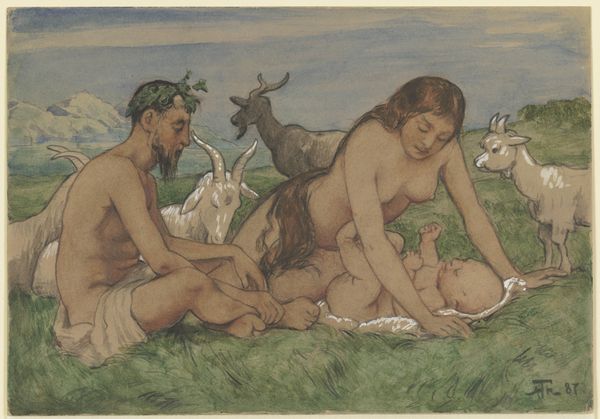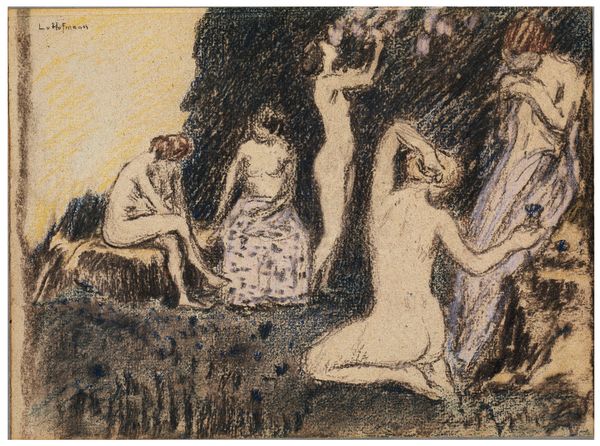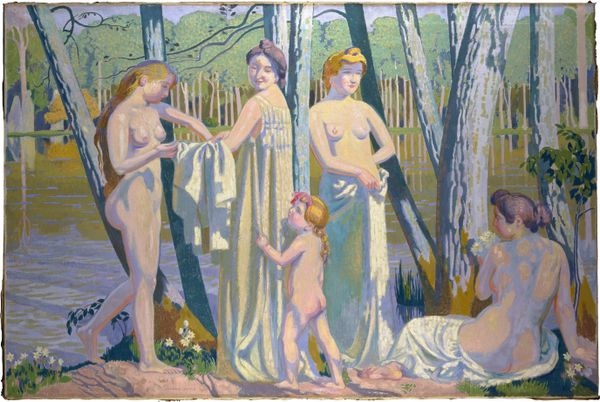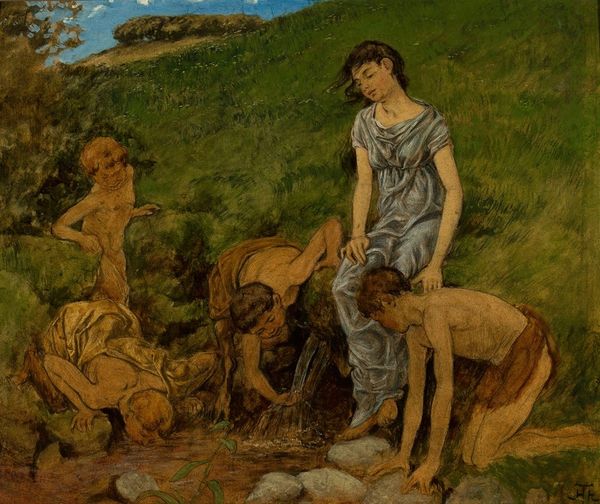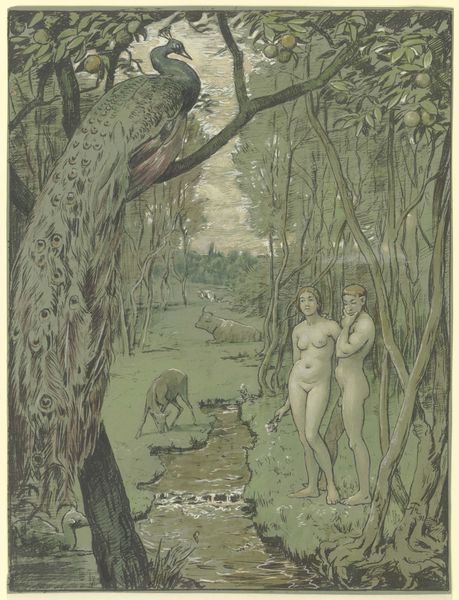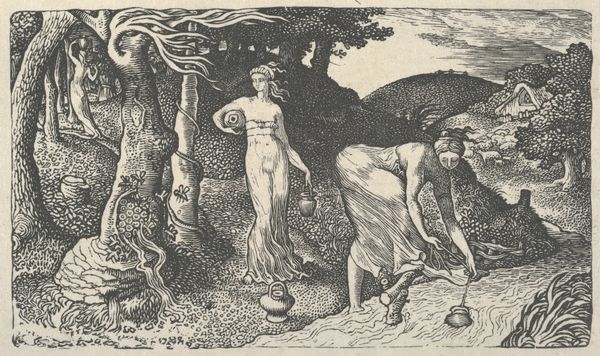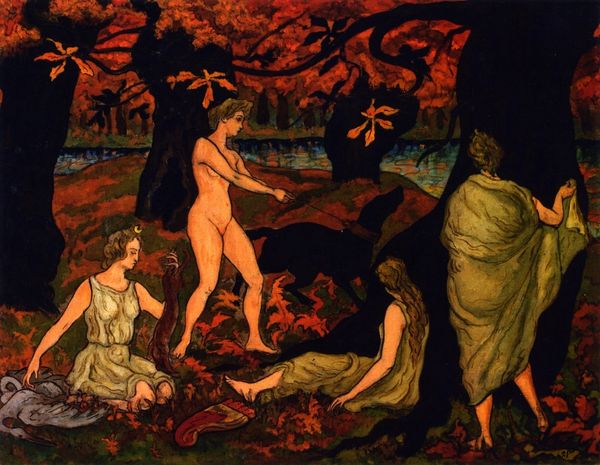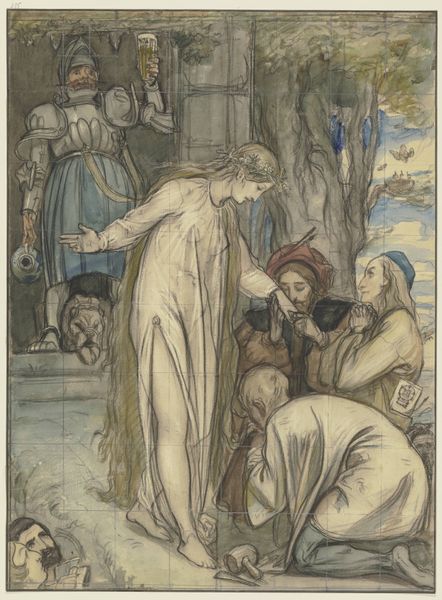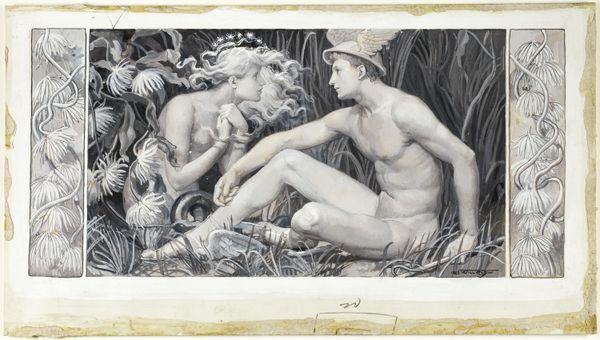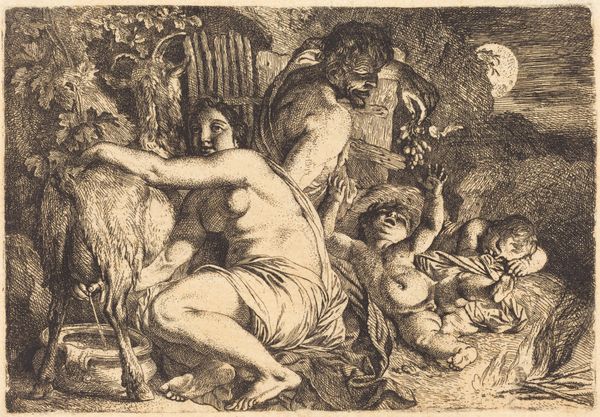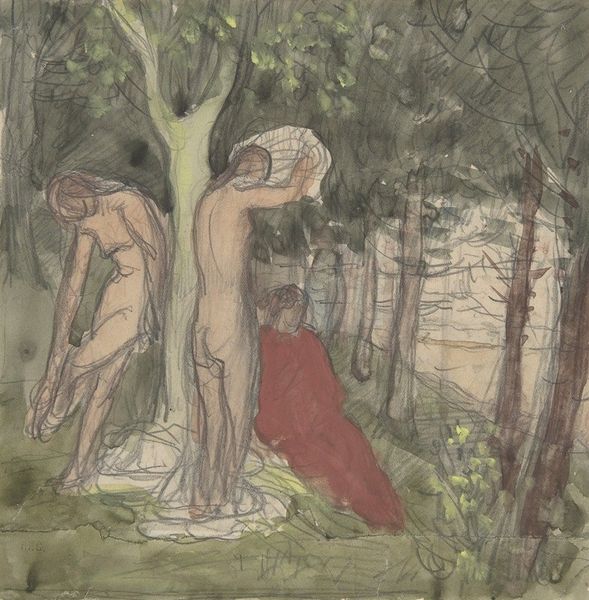
Copyright: Public Domain
Editor: This is "Faun and Nymph" by Hans Thoma, a watercolor drawing from 1888 currently housed in the Städel Museum. It’s such a curious piece. The style feels classical, but there's a distinct softness in the watercolor that makes it seem more modern. What is your read on it? Curator: I'm interested in how the medium—watercolor on paper—itself contributes to the artwork’s meaning. The way Thoma uses watercolor speaks volumes about access to art making in the late 19th century. This wasn't necessarily a commission for the elite, but rather could've been made for the emerging middle class. This changes the dialogue entirely when comparing it with art created for aristocracy. Editor: I never thought about the economic aspect that intimately! Curator: Absolutely! Consider the labor involved, the availability of the paper, pigments, and even artistic training at the time. Watercolor was more accessible, more easily transported and stored. Did the democratization of artistic materials change the type of subject matters to be more domesticated as opposed to glorious mythological settings? Editor: So, the choice of watercolor, being more accessible, made it easier to create works like this one, opening doors for a broader range of artists and even impacting the chosen themes? Curator: Precisely! It shifts our focus from solely aesthetic value to understanding the means of artistic production. Understanding these choices lets us appreciate what went into producing something as supposedly whimsical as nymphs or fauns. Editor: That gives me a lot to ponder about Thoma's work. Thank you for pointing out materiality and context, making me rethink how materials and social environment come into play. Curator: The materials themselves tell a rich story that has yet to be fully decoded. Art and labor.
Comments
No comments
Be the first to comment and join the conversation on the ultimate creative platform.
